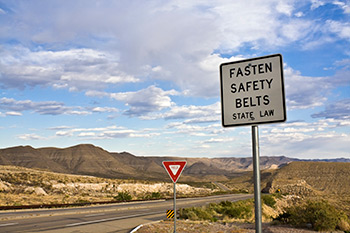
Unanimous Texas Supreme Court Buckles Down On Buckling Up
Recent Changes in Texas Seat Belt Law
February 15, 2015
 Nabors Well Services, Ltd. v. Romero
Nabors Well Services, Ltd. v. Romero
Supreme Court of Texas, No. 13-0136 (February 13, 2015)
Justice Brown (Opinion)
Ken Carroll
Under the Texas Supreme Court’s decisions in Kerby v. ACC and Carnation Co. v. Wong, evidence of a plaintiff’s failure to fasten his or her seat belt has been inadmissible in Texas personal injury cases for more than 40 years. A unanimous Supreme Court has now overruled Kerby and Carnation, holding that “relevant evidence of use or nonuse of seat belts, and relevant evidence of a plaintiff’s pre-occurrence, injury-causing conduct generally, is admissible for the purpose of apportioning responsibility under [Texas’s current] proportionate-responsibility statute, provided that the plaintiff’s conduct caused or was a cause of his damages.”
The Supreme Court explained that the prior rule was rooted largely in the “unforgiving all-or-nothing” regime of contributory negligence in effect when Kerby and Carnation were decided. That doctrine has now been replaced by a proportionate responsibility system that can take into account a plaintiff’s failure to buckle up, without granting a defendant complete immunity for his or her misconduct. Recounting the context and history of the prohibition on seat-belt evidence, the Court also noted other changes that augured in favor of its new approach: For example, back in the days of Kerby and Carnation, seat belts were in their infancy and neither federal nor state law required their use. Now, based on overwhelming evidence of belts’ efficacy in preventing and reducing injury, every jurisdiction mandates the use of seat belts and imposes criminal penalties for failure to do so. Under the old evidentiary system, therefore, when a Texas driver or passenger involved in an accident had failed to buckle up, he or she faced the anomalous situation of being subject to a criminal sanction for that omission while facing no adverse consequences for it in a civil suit arising from the same events.
Plaintiffs argued that evidence of failure to use a seat belt should be excluded because that conduct could not have caused the accident, and a plaintiff should not be required to anticipate negligent conduct by the defendant; the Court rejected that argument based largely on the language of the proportionate responsibility statute, which focuses on the various parties’ roles in causing “the personal injury” or the “harm for which recovery of damages is sought,” rather than simply the occurrence that led to the injury. The Court similarly explained that failure-to-mitigate is not an appropriate vehicle for considering a plaintiff’s failure to use a seat belt, because that doctrine is predicated on a plaintiff’s post-occurrence conduct; failure to fasten a seat belt, as required, occurs pre-event and is therefore better included in the overall proportionate responsibility calculation.
On a final note, one should not overlook that this is not just a “seat-belt case.” In announcing its holding the Court stated that “relevant evidence of a plaintiff’s pre-occurrence, injury-causing conduct generally” will now be admissible. This passage no doubt will be mined extensively by defendants’ counsel seeking to reduce their clients’ proportionate responsibility exposure in a variety of settings beyond auto collision cases.

